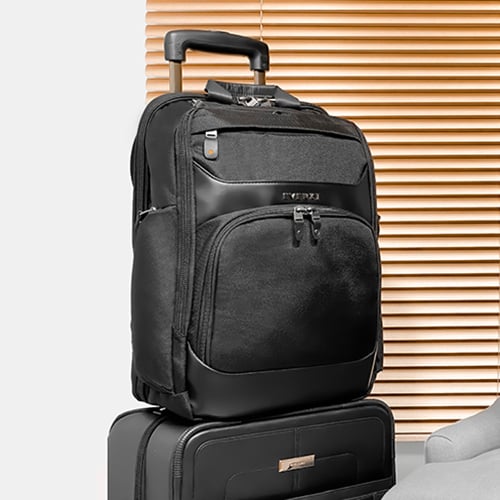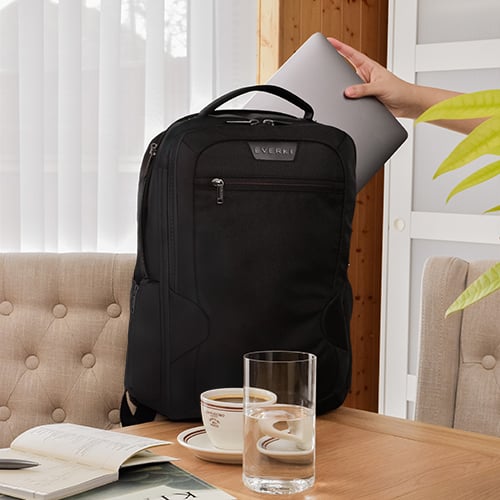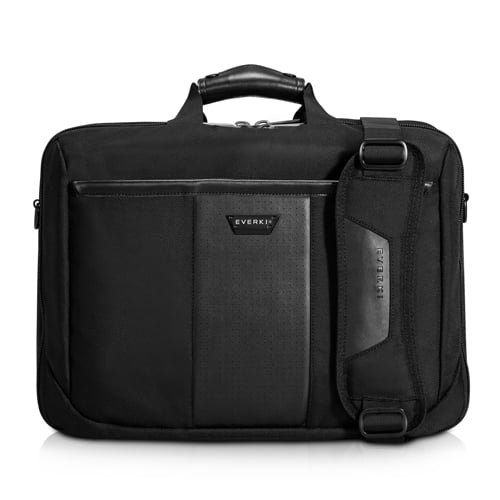Internal vs External Frame Backpack: Which Should You Choose
Summary
- Internal frame backpacks have a lightweight frame integrated into the backpack's structure, and this frame is usually not visible. These backpacks have a sleek look and hold weight closer to the body, which makes them more stable and easy to carry on rugged trials.
- External frame backpacks are more old-school, but there is a good reason why they are still around. These backpacks have a visible, rigid frame that supports the backpack. Unlike the internal frame backpacks, these are heavier and are well-suited for well-maintained and relatively even trials.
- Some of the internal frame backpacks come with ventilation channels or mesh back panels, but they are no match to the airflow offered by external frames.
- One of the most significant features of external frame backpacks is the gap between the frame and the pack; this gap allows the air to flow, keeping you cool on a hot summer day or on a strenuous hike.
- Internal frame backpacks come in ultralight and deluxe options. The ultralight one has a limited number of pockets, while the deluxe backpack has plenty of storage options that keep your belongings organized.
- External frame backpacks have plenty of pockets that make it easier for you to store and access your gear. The varied number of pockets makes them more organized for bulky loads.
What Is an Internal Frame Backpack?


Internal frame backpacks have a lightweight frame integrated into the backpack's structure, and this frame is usually not visible. These backpacks have a sleek look and hold weight closer to the body, which makes them more stable and easy to carry on rugged trials. Since these backpacks are sleek and don’t have an external frame, they are an ideal choice for tight trials, as they won't get stuck with trees and branches.
Distinct Features and Pros of Internal Frame Backpacks
Stability:
The sleek design and snug fit of internal frame backpacks give them a better balance, especially on trails that are uneven and steep. The close fit also reduces the strain on your body and prevents the bag from shifting during movement.
Versatility:
These backpacks are suitable for both technical climbs and multi-day hikes.
Advanced Suspension Systems:
Many of the internal frame backpacks come with an advanced suspension system, i.e., adjustable straps, padded hip belts, and load-lifter straps. These features let you adjust the bag to your comfort.
Lightweight Construction:
These backpacks are made of modern, lightweight materials, making them significantly lighter than the older versions. Since these backpacks are lighter, you won’t easily get tired.
Sleek Profile:
The snug and sleek fit of these backpacks makes them an ideal choice for narrow or overgrown trials, as they are less likely to snag on branches or rocks.
Internal Frame Backpack Uses
- Internal frame backpacks are built for challenging environments. These are best for rugged terrains and off-trail scrambling, because of their sung and sleek fit.
- Because of their stability and load control, these backpacks are the best choice for activities that require agility, such as mountaineering, rock climbing, or scrambling over boulders.
- These are also a great choice for carrying compact and specialized gear. As the backpacks themselves are light in weight, these are especially useful for carrying gear on trials, where every ounce and inch counts.
Cons of Using Internal Frame Backpacks
- You might be able to find internal frame backpacks at a range of prices, but one made of quality material that is going to last for years to come is more expensive.
- As these backpacks hug your bodies, there is going to be less airflow between the pack and your back. This can become an issue on those hot summer days.
- One of the major disadvantages of using an internal frame backpack is that there are fewer areas to attach other gear.
What Is an External Frame Backpack?


External frame backpacks are more old-school, but there is a good reason why they are still around. These backpacks have a visible, rigid frame that supports the backpack. Unlike the internal frame backpacks, these are heavier. As there is an external frame, it is easier for you to strap on almost anything to the frame, which is one of the main reasons why this backpack has survived for such a long while. Another benefit this backpack offers is ventilation, i.e., there is always some space between the back panel and your back, allowing for the air to flow on those hot summer days. These backpacks are well-suited for well-maintained and relatively even trials.
Main Features and Pros of External Frame Backpacks
Load Distribution:
The innovative addition of a padded hip belt makes it easier to transfer weight to your hips; this allows you to carry heavier loads easily. Moreover, the frame structure distributes the load evenly and reduces strain on your shoulder and back.
Ventilation:
One of the most significant features of an external frame backpack is the gap between the frame and the pack. This design keeps the air flowing on your back and keeps you cool on a hot day or on a strenuous hike.
Ease of Attachment:
As there is a rigid external frame on these backpacks, you can easily lash on bulky gear like tents, sleeping bags, and cooking utensils. This makes them a perfect choice for adventures that require you to pack large and irregularly shaped items.
Durability:
External frame backpacks are built to last and are made of strong materials and designs that can withstand heavy use.
Affordability:
These backpacks are often more budget-friendly as compared to the internal frame backpacks and are a perfect choice for those seeking high capacity.
When choosing a backpack, it is important to choose the right size so that everything you need can fit in. Need help calculating the backpack size? Check out Everki’s backpack size guide today.
External Frame Backpack Uses
- These backpacks are ideal for use on well-maintained and graded trials where the terrain is moderate. Their design makes them easy to use and makes them perfect for carrying heavy loads.
- As there is an external frame to these backpacks, you can easily lash on bulky, irregularly shaped gear to this frame.
- These backpacks are often used by trail crews, hunters, and beginner backpackers.
Cons of Using External Frame Backpacks
- These backpacks come with fewer features than the internal frame backpacks. You won’t even have smaller compartments to stay organized. And because of the rigid and sturdy frame, you won’t be able to adjust it for your back.
- It can get tricky to maneuver these; when you are on a trail, these keep floating on your back, shifting weight.
- These backpacks are heavy.
- Since there is a frame sticking out, they might cling to branches and trees, making it harder for you to move.
A Comparison of Internal Frame Vs. External Frame Backpack


Weight
Internal Frames:
Interal frame backpacks are made up of lightweight materials and they have a compact design which is suitable for long and strenuous hikes.
External Frames:
External frame backpacks, however, are heavier when compared to the internal frame ones, because of the thick frame. Moreover, these backpacks are extremely durable and will last you a really long time.
Comfort and Support
Internal Frames:
These backpack have a snug and sleek design, they fit around your back, letting you move quickly without losing your balance. These are perfect to be used on uneven trials andterrains.
External Frames:
Unlike internal frame backpacks, these don’t fit around your back, but these let you walk in an upright position, which some find more comfortable for long distances. These backpacks should be used when you are planning to hike on a maintained and even terrain.
Cooling and Ventilation
Internal Frames:
Some of the internal frame backpacks come with ventilation channels or mesh back panels, but they are no match to the airflow offered by external frames.
External Frames:
One of the most significant features of external frame backpacks is the gap between the frame and the pack, this gap allows the air to flow keeping you cool on a hot summer day or on a strenuous hike.
Storage and Organization
Internal Frames:
Internal frame backpacks come in ultralight and deluxe options. The ultralight one has a limited number of pockets, while the deluxe backpack has plenty of storage options that keep your belongings organized.
External Frames:
External frame backpacks have plenty of pockets that make it easier for you to store and access your gear. The varied number of pockets makes them more organized for bulky loads.
Fit and Adjustability
Internal Frames:
Backpacks with internal frames have adjustable suspension systems that give you a customizable fit.
External Frames:
External frame backpacks offer limited adjustability, which means that you have to choose a pack that fits well initially.
Aesthetics
Internal Frames:
Internal Frame backpacks have a sleek and modern design that appeals to most backpackers.
External Frames:
If you are someone who appreciates a utilitarian look and a classic design, this backpack is for you.
Understanding the difference between different types of backpacks can help you make the right choice for yourself. Everki’s detailed guide on different types of backpacks breaks down different backpack styles, their features, and their uses to help you make the right choice.
When Should You Use an External Frame Backpack?
You should use an external frame backpack when:
- You are going for a hike on a well-graded and well-maintained trail.
- You have to carry bulky or heavy items like camping gear.
- You want to stay cool during summer hikes.
- You are on a budget and are looking for a high-capacity pack.
Which Is Better: Internal or External Frame Backpacks?
Both the internal vs. external frame backpacks have specific features and are designed for different uses. The choice between the two depends on your personal needs.
- You should choose internal frame backpacks when hiking on technical terrain where agility, balance, and sleekness are important.
- If you need to carry heavy loads on well-maintained, graded trails, you should opt for external frame backpacks.
Both types have specific features that will help you make the right choice for yourself.
Over to You
The choice between internal vs external frame backpacks comes down to the requirements of your adventure. For technical hikes, where maintaining balance is crucial, internal frames are unbeatable, while external frames should shine in cooling and carrying heavy loads.
Find the perfect backpack with Everki. Get your hands on premium, thoughtfully designed backpacks and laptop bags for work, travel, and everything in between. Stay organized and comfortable with Everki!
FAQs
Q: What is the main difference between internal and external frame backpacks?
A: Internal frame backpacks are sleek, form-fitting, and stable for rugged terrain. On the other hand, external frame backpacks are designed for well-graded trials, offer ventilation, and can carry heavier loads.
Q: Are external frame backpacks outdated?
A: Although external frame backpacks have been around for a really long while, they are certainly not outdated.
Q: How do I choose between internal vs external backpack frame backpacks?
A: In order to choose between external and internal frame backpacks, you need to first understand your personal needs and consider the terrain you will be hiking on and the loads you will be carrying. Internal frame backpacks are good for rugged terrain, while external frame backpacks are an excellent choice for well-graded terrain.











